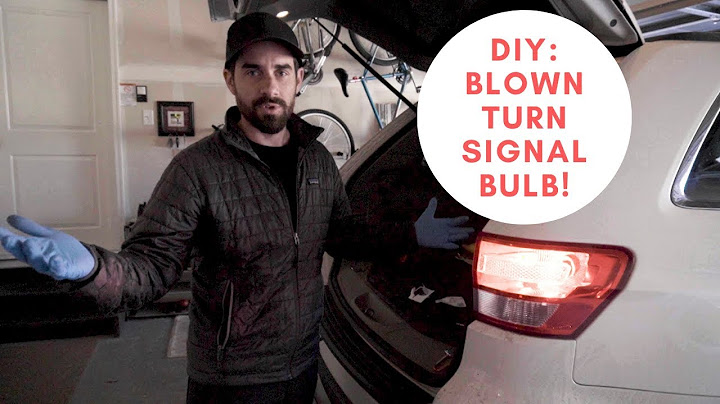Welcome back to our series on properly diagnosing mechanical problems rather than blindly chucking money at replacement parts hoping to stumble on a fix. Granted, a cracked exhaust manifold doesn’t rank very high on the tech-o-meter, but it’s directly related to last month’s topic of diagnosing a bad O2 sensor. And you’d be surprised at just how many fuel-injected 4.0L, 2.5L, and 3.8L-powered Jeeps are running around with a cracked exhaust manifold. Show Cracked Manifold Causes and Effects Diagnostics There are many old-school and Internet diagnostics that range from probing with an unlit propane torch to shoving rags into the tailpipe to force the exhaust out the cracks. In reality, the best diagnostic is visual. For engines with tubular manifolds, like most 4.0L engines, the cracks are usually visible with a flashlight. Check the areas where tubes come together. Normally they’ll crack right in the valleys on the intersections at or right next to the welds. For cast iron manifolds, such as on earlier 2.5L and later 3.8L engines, it’s a bit more complicated thanks to the integrated heat shrouds. The leaks will be most evident at first startup with the engine cold. That’s because as the manifolds heat up the metal expands and can diminish or even completely seal a leak that’s evident with the engine cold. If you have an electric fan, complete this test before the engine comes up to temp. On a mechanical fan, either unbolt the fan or remove the fan belt so the pulley no longer spins. If you pull the belt, don’t run the engine for more than a minute or so or you can roast it. So, with no fan blowing air across the bay, fire the engine and listen and feel for a blast of exhaust gas coming from between the manifold and shroud. Let your ears guide you to the right spot. After chasing an audible exhaust leak on our ’89 YJ and trying to seal the manifold-to-exhaust downtube several times, we eventually unbolted the fan and performed this test only to find a huge whack of exhaust coming from between the heat shield and manifold that wasn’t noticeable when the cooling fan was spinning. Removing the manifold and snipping off the heat shield revealed major fissures throughout the cast iron. The Fix On the cast iron manifolds welding is an option with a high-nickel rod and an arc welder and some have even had good luck slathering the cracks with JB Weld. Neither gives us a warm and fuzzy feeling. Some applications have aftermarket tubular headers available, but if not, Quadratec carries quality OE-spec replacements, so that’s what we went with. Joined
May 11, 2002 · 16 Posts
Discussion Starter · #1 · Jul 22, 2002 Just curious as to how others have determined this was their problem. At the moment my exhaust is buzzing something fierce right around 1900 rpm. When I say buzzing, I mean it sounds like two pieces of metal in the exhaust are vibrating against each other, but I'm not sure why this would occur at a given rpm. The condition is generally present at start up of a
cold engine, when it can be heard both in the engine bay as well as under the jeep. After it's warmed up a bit it tends to only occur around 1900rpm, at which point it shounds like it's coming mostly from under the car and towards the exhaust exit. Every now and then I get a really bad reverb from the exit of the exhaust, but I'm not sure if this is part of the same problem. Any suggestions guys? Joined Mar 31, 2002 · 21 Posts
my situation.... when my manifold broke it was determined by a couple of key events 1. my engine became audibly louder throughout the rpm range 2. my mpg droped significantly 3. noticeable drop in performance the stock jeep manifold has a defective weld behind, i think, the 5 or 6th cylinder opening (closest to the back fire wall) so i think that is what is causing your problems because that's what happened to me. that's probably what has happened to your jeep, my suggestion is to first get it confirmed by a mechanic, then you will probably need a new manifold. Get an aftermarket (Kolak!) manifold and you will really feel the increase in power when this problem is fixed. Joined May 10, 2002 · 73 Posts
my manifolt cracked right where the two pipes come together to make one big one that goes to your cat. inspect your manifold both above and below the jeep and look for cracks. you will notice a place that has a black ring or somthing, that is where the leak is. HTH. Mark Joined Feb 13, 2002 · 680 Posts
i have the same problem and want to replace them. i hear about kolak products but never see a link to any info. anyone have a link, pics, etc? thanks. robert Joined May 11, 2002 · 242 Posts
"Kolak" is actually Nick, who runs Multitronics. He's the resident "Father of all Knowledge" (anyone else watch Dexter?) when it comes to performance products for Jeeps. There's no official website for Multitronics that I know of, just e-mail him at
[email protected] and ask about whatever you're interested in. He's a great guy to deal with, and has the best prices and service around. My brother and I have both bought products from him, and have been very pleased with them. How do you know if your exhaust manifold is cracked?CAR FIX lists four signs your exhaust manifold is cracked.. Visible Cracks. Inspect the manifold for visible cracks, which will be easy to see if they are large. ... . Strange Noises. If you are driving with a cracked exhaust manifold, you might hear the exhaust gases leaking out of the gasket. ... . Exhaust Odor. ... . Performance Loss.. What is the three most common symptoms of a cracked exhaust manifold?3 Key Signs of a Leaky Exhaust Manifold. Excessive Noise. One key goal of a well-working exhaust system involves dampening the loud noises produced by your engine's combustion. ... . Reduced Engine Power. A damaged exhaust manifold also often has a negative effect on the performance of your car. ... . Inaccurate Oxygen Sensor Readings.. What problems can a cracked exhaust manifold cause?Besides leaks, cracks in the manifold can allow outside air in, which in turn can cause the engine to stall or die. If the crack isn't fixed in a timely fashion, you can also cause major damage to the engine, such as blown head gaskets and overheated heads.
Can you drive with a cracked exhaust manifold?If you had a 5mm diameter hole in your exhaust manifold, you wouldn't want to drive your car anywhere unless you were wearing ear defenders. Until enough gets into the cabin and you make a fatal mistake. Unfortunately the answer is "as long as you live".
|

Related Posts
Advertising
LATEST NEWS
Advertising
Populer
Advertising
About

Copyright © 2024 en.frojeostern Inc.


















